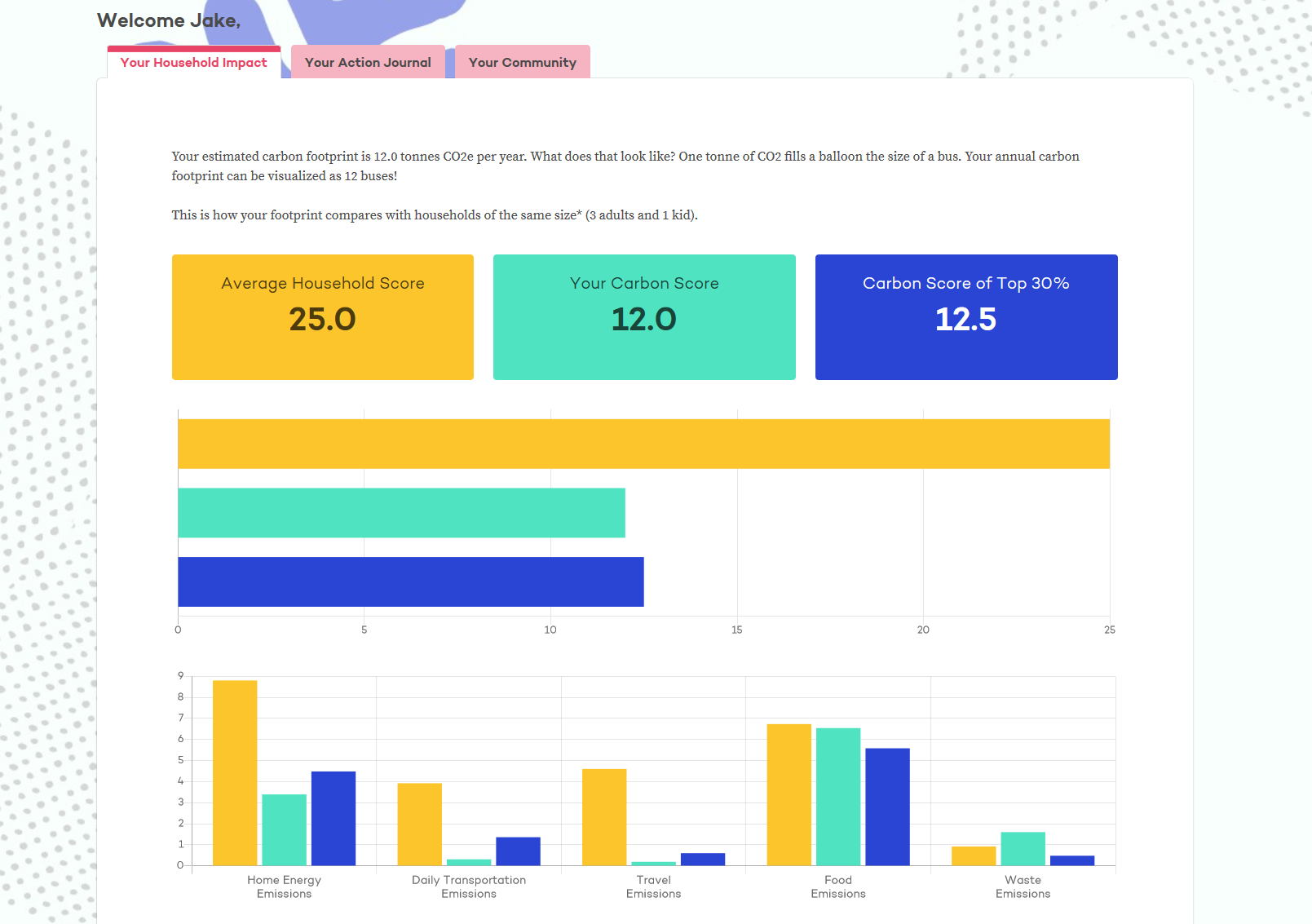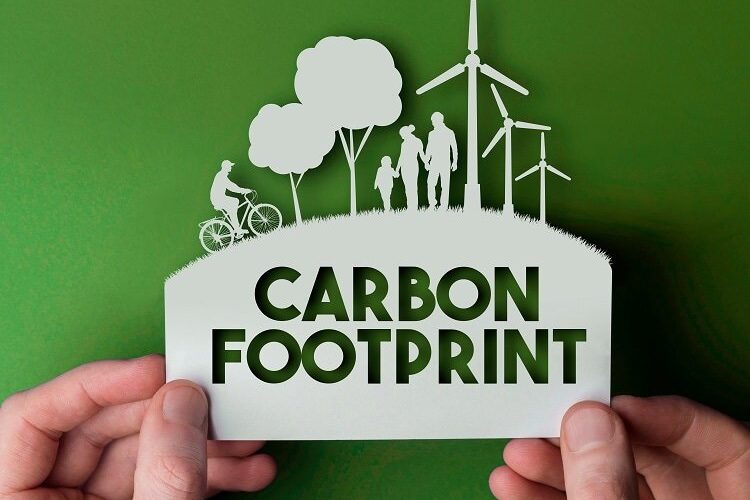Whether we like it or not, our daily activities increase our carbon footprint. A carbon footprint is the measure of greenhouse gas emissions (including carbon) that a person emits from their daily activities. It is important to know your carbon footprint and take responsibility for the emissions that you are producing as this contributes to global warming and results in the impacts seen with climate change.

Source: Shout Slogans
Being a climate leader is simple: measure your carbon footprint, take actions to lower it, buy high-quality offsets when you can’t and talk with others and let them see you living your values. Jake Miller Acting Director at Project Neutral
In 2018, Canada’s national greenhouse gas emissions (in all sectors) was 729 Mt CO2 equivalent. With a population of 37.06 million (in 2018) that meant that 19.67 tonnes of CO2 equivalent were produced per person. Since then, those numbers have only increased. According to Project Neutral, one tonne of carbon dioxide can fill a balloon the size of a bus. Therefore, all the national emissions could be represented by the size of 20 buses per person which results in 741.2 million buses for all of Canada. Now that’s a lot of CO2 equivalents!

Infographic created by Shanella Ramkissoon
While this number is representative of all emissions from the economic sectors (waste, agriculture, electricity, transportation, oil and gas to the, heavy industry and buildings), it is important to highlight the environmental impact of our overarching societal needs and their demands from nature. How can you help? The easiest option is to start at home.
To determine your carbon footprint, several carbon calculators exist but this article focuses solely on Project Neutral where you can measure your carbon footprint. It is important to consider one’s household carbon footprint. This calculator uses thorough questions to provide you with an ideal representation of your carbon footprint.

Sample of what your carbon footprint can look like on Project Neutral
Source: Project Neutral via Jake Miller
Jake Miller, Acting Director at Project Neutral stated that “We call household carbon footprints the “missing metric” in our broader climate change discussion. With 45% of Canada’s emissions being attributable to household choices it is really essential that we all start measuring and start discussing how much carbon we are producing. At Project Neutral, we believe that in the future carbon measurements will become mandatory and a lot more prominent in our lives. We expect to see carbon footprints included on all food items, all products, vehicles, houses, hotel rooms…it will become a major factor in consumer choices. For now, we are counting on people to step up as leaders in their daily lives and start measuring and addressing their carbon impact using tools like ours.”
Based on Project Neutral’s advice, everyone must consider their mode of daily transportation, the energy efficiency of their home, the food they consume, the waste they produce and the number of flights they take. Project Neutral’s suggestions are discussed in greater detail below.
5 Ways to Reduce Your Carbon Footprint
- Drive less– walk, bike or take public transit to reduce the amount of emissions you produce. The amount of carbon dioxide you produce is dependent on the fuel efficiency and fuel type of your vehicle and your travel distance.
- Increase home energy efficiency- making small changes to your home to improve energy efficiency can help. These changes can include:
- using energy-efficient lightbulbs (e.g. compact fluorescent lamps) and appliances
- ensure your home is properly insulated including hot-water tank and pipes
- ensure doors and windows are properly sealed
- lower the heat
- using clothing lines instead of dryers in the summer
- Reduce your waste–
- Compost your food when you can as organic material that is instead sent to the landfill produces the greenhouse gas methane under the anaerobic conditions which is 26 times more potent than carbon dioxide. If your food is instead composted, this aerobic process will prevent the formation of methane which has one tonne of CO2 equivalent for each tonne of organic waste that is sent to the landfill.
- Learn about the 10R’s for discontinuing the use of plastic

Miller also suggests a few points that everyone should note regarding carbon footprints:
- “Location Matters – While a litre of gasoline burned anywhere on the planet produces the same amount of CO2, the natural gas or electricity you use can vary significantly based on where you live. This is particularly true for how clean your electrical grid is. Project Neutral was developed in Ontario and we use specific emission factors to give the most accurate results for this province.
- They are Estimates – If you would like to track down the shipment of bananas you just picked up you can likely find your carbon footprint down to the kilogram. However, any carbon footprint calculator that exists needs to operate on some basic assumptions particularly when they ask more approachable questions like “How much do you drive?” vs. “How many litres of gasoline did you burn?” This imprecision exists in everything from your household, to industrial carbon inventories to national emissions–don’t let it distract you from how powerful a tool your footprint can be!
- They are Diagnostic – The biggest power of a carbon footprint is that it reveals where carbon sources exist and can be used to judge your reduction efforts. It’s like stepping onto the scale as you begin a low carbon lifestyle–it will show you how far you’ve come and be a powerful motivator moving forward.
- They are Scary until they aren’t – Most people are nervous to find out their carbon footprint. It’s scary to take that step towards taking personal accountability for your emissions. After doing so the vast majority of people are relieved to know and have a specific amount of carbon to focus on reducing. We tend to fear most what we don’t know so using a carbon footprint calculator is a shortcut to feeling less scared and more in control in the face of the climate crisis.”
Carbon Footprint Photo Source: PNG Egg
It can therefore be seen that knowing your carbon footprint is a great first step to reducing your contribution to the greenhouse gases that affects everyone globally. Secondly, learning how to reduce your impact on your carbon footprint and making these changes can have a significant impact- consistency is key. Thirdly, educating your family and friends on the issue can result in a positive collective impact on reducing carbon and other greenhouse gases in the atmosphere.
Other ideas to make changes at home and to your daily life can be found at Project Neutral. Similarly, many incentives exist.
The small steps we take in reducing our carbon footprint can collectively be one giant step for mankind.
Shanella Ramkissoon is a Masters in Environment and Sustainability candidate. Her background is in the field of Environmental Science and Environment and Resource Management. Her interests lie in environmental conservation, especially for marine species such as coral reefs, turtles and dolphins. In her free time, she enjoys landscape photography, baking and art and craft projects.













